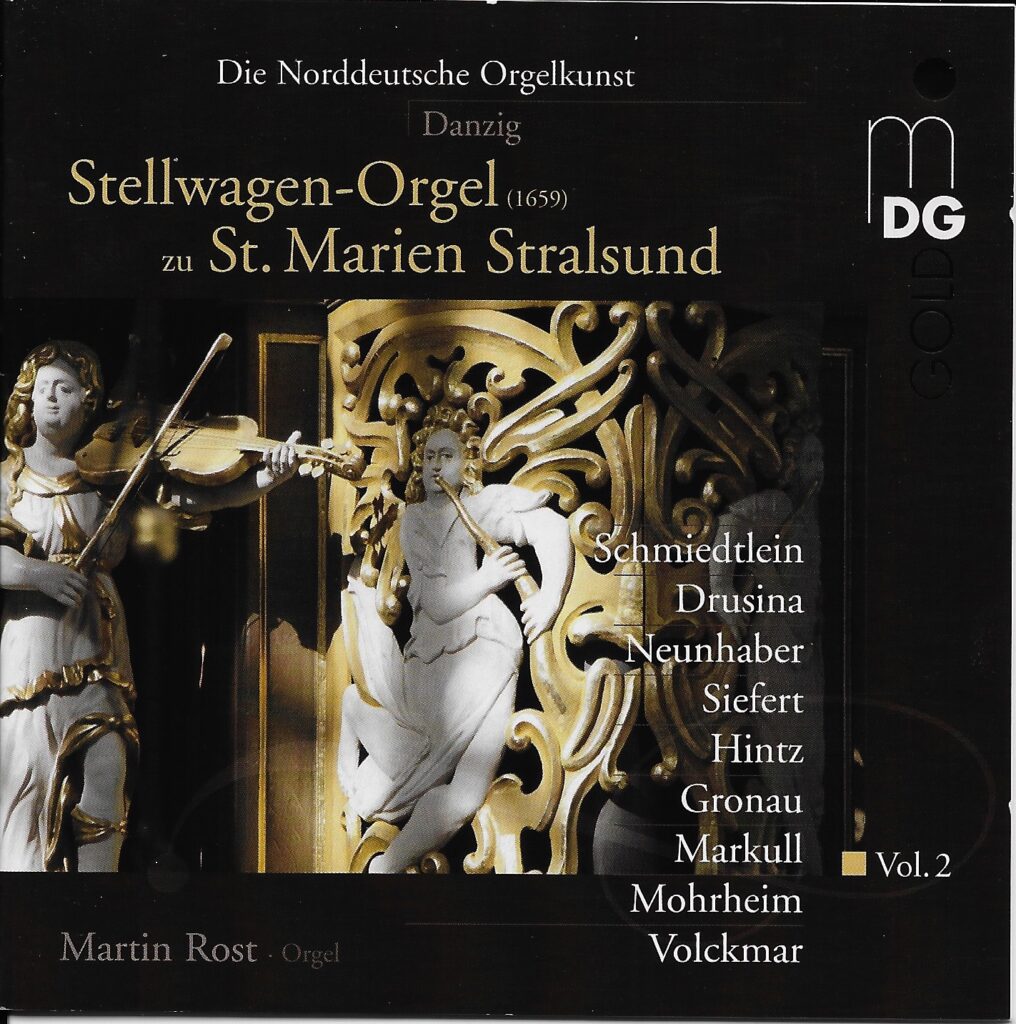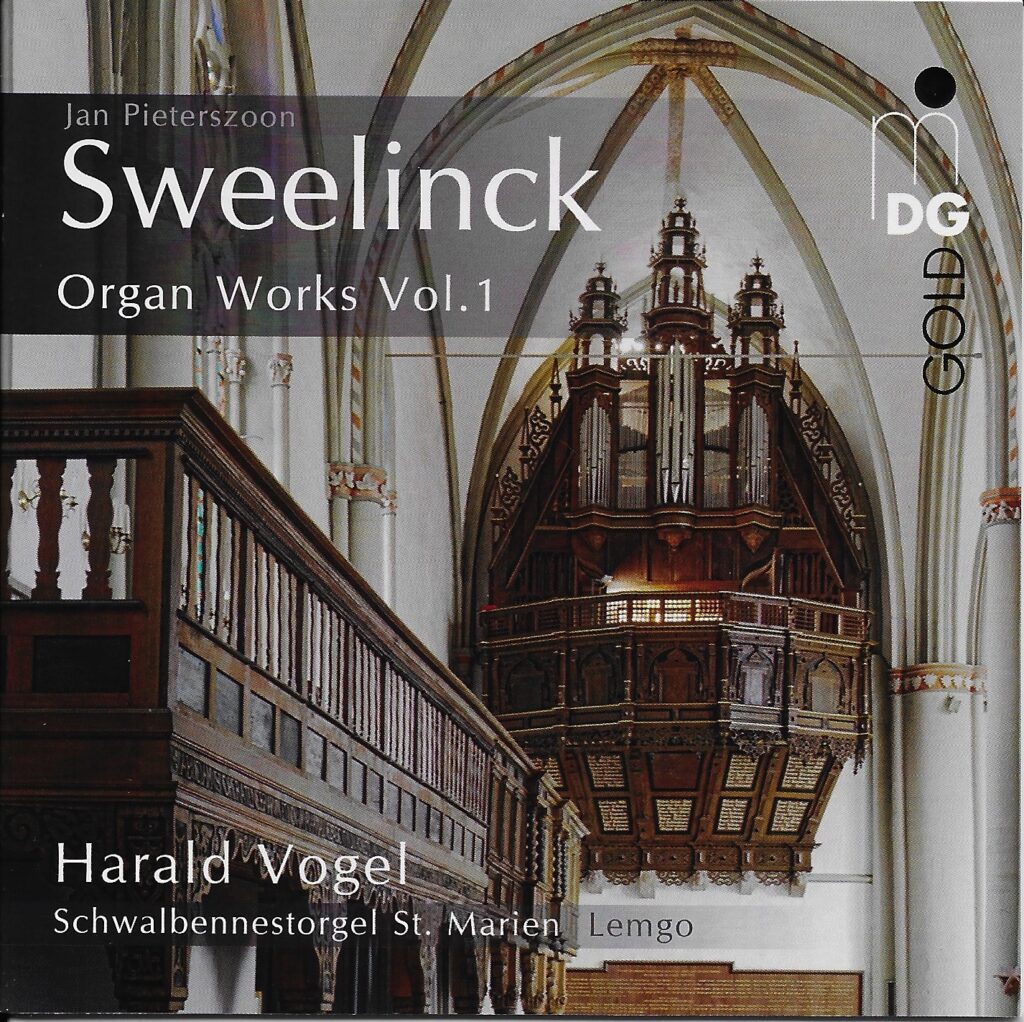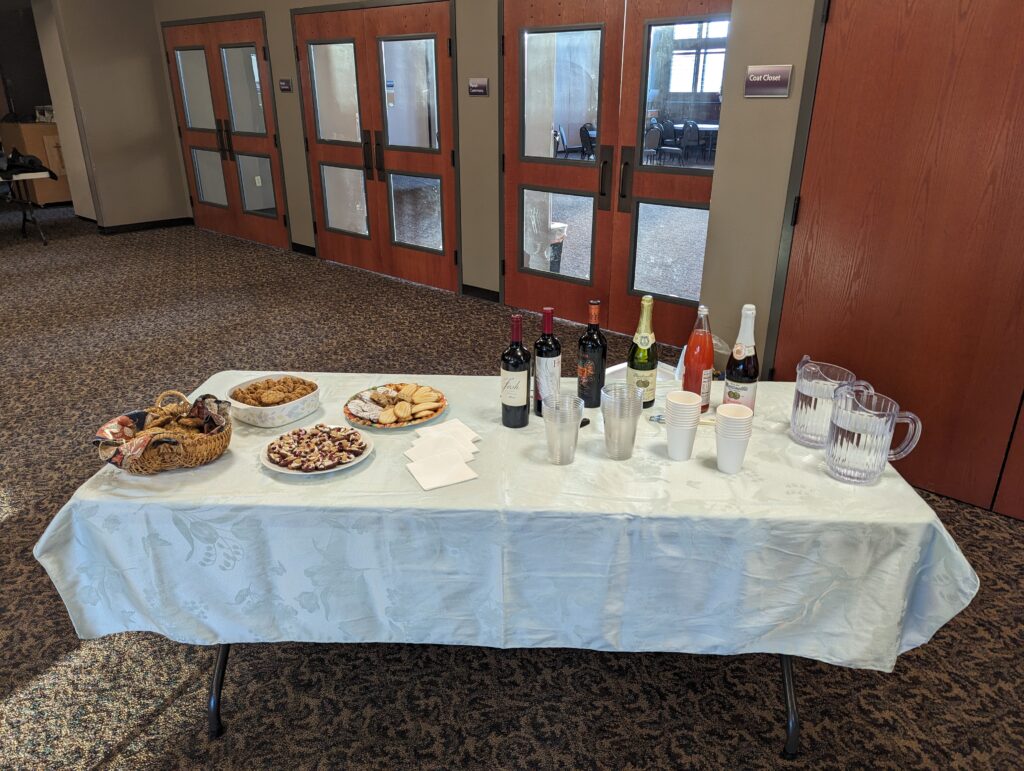Dennis Northway has provided the following details concerning the June 1 2024 organ crawl with the Olympia Chapter.
Click on the PDF to enable scroll arrows at the bottom in order to view all of the pages.
Dennis Northway has provided the following details concerning the June 1 2024 organ crawl with the Olympia Chapter.
Click on the PDF to enable scroll arrows at the bottom in order to view all of the pages.
In a recent article, the Seattle Times brought to light a challenging reality – church attendance in the Seattle metropolitan area is lower than in any other part of the country. This trend is alarming beyond spiritual considerations; it threatens a major pillar of our cultural heritage – the organ and its majestic soundscapes.
Indeed, most organs are housed in churches, and if the hallowed pews remain unoccupied, so too do the resonant chambers of these magnificent instruments. Our music, which once filled sanctuaries with ethereal harmonies and profound echoes, now often falls silent. In instances where music does fill a church, it is more often accompanied by the strumming of guitars and beating of drums – a dramatic and deplorable departure from the sophistication and sublimity of organ music.
It is essential for us to understand and address this: the survival of the organ as an instrument is inextricably tied to the context within which it is played. We must strive to assert the organ’s independence and equate it not merely with religion but with its intrinsic musical value, its power to captivate, and its capacity to elicit emotion.
There exist several avenues by which we can catalyze this transition. A primary tool in our arsenal is education. By organizing educational events, particularly targeted at the fertile minds of children, we can engender an appreciation for organ music at a young age. Think “a day at the opera”, only it’s “bring your children to see how an organ works.”
Additionally, aligning organ events with secular observances such as Halloween and July 4th, and arguably Christmas, could imbue these occasions with a classical touch, increasing the visibility and broad appeal of organ music.
Casual gatherings such as “Bring a bag lunch and enjoy 30 minutes of compelling organ music” could also provide a setting that makes organ music more accessible and enticing to the public.
Local chapters of the American Guild of Organists are far from impotent in this regard – in fact, we are key to ensuring a vibrant future for the organ. By actively working to boost the visibility and appeal of organ music, we can stimulate interest and develop a lasting appreciation for this magnificent instrument.
Let’s harness our potential and make a concerted effort toward revitalizing the role of the organ, not only within the hallowed confines of places of worship but also in the wider world of music and cultural events. This will surely contribute to ensuring the organ’s continued relevance and survival. The future of the organ is in our hands, let’s play it right!
The Tacoma chapter of the American Guild of Organists embarked on a delightful journey into the golden era of silent cinema on January 24, 2024, as members gathered at the historic Paramount Theater in Seattle. The occasion was marked by a screening of the timeless classic “Safety Last,” accompanied by the mesmerizing talents of an accomplished organist.
The Paramount Theater, with its opulent architecture and rich history, provided the perfect backdrop for this cinematic adventure. Attendees were treated to an evening that seamlessly blended the magic of silent film with the enchanting live music from the theater’s magnificent organ.
“The experience was nothing short of magical. The organist’s performance was a true highlight, elevating the entire cinematic journey,” remarked David Dahl, a member of the Tacoma chapter of the American Guild of Organists.
The organist, whose skillful performance set the tone for the entire event, skillfully underscored the on-screen antics of Harold Lloyd in “Safety Last.” The music, a harmonious dance with the visuals, heightened the emotional impact of the film and transported the audience to an era when the organ played an integral role in the cinematic experience.
Members of the American Guild of Organists were unanimous in their praise for the organist’s artistry. The skillful use of the instrument added depth to the silent narrative, creating a symphony of emotions that resonated throughout the theater. The precision and flair with which the organist navigated the intricate plot demonstrated a deep understanding of the synergy between music and film.
The atmosphere within the Paramount Theater was electric, as laughter and gasps echoed through the auditorium. The timeless charm of “Safety Last” combined with the live organ accompaniment created a truly immersive experience, reminding everyone present of the enduring power of silent cinema.
With approximately 75% of the theater’s seats filled, it was evident that the allure of this unique event had captivated a diverse audience. The Tacoma chapter of the American Guild of Organists expressed their gratitude to both the Paramount Theater and the talented organist for collaborating on such a memorable evening.
As the credits rolled and the applause echoed, attendees left the Paramount Theater with a sense of nostalgia and appreciation for the artistry that brought “Safety Last” to life once again. The event served as a poignant reminder of the importance of preserving and celebrating the rich heritage of silent cinema, ensuring that the magic of this bygone era continues to captivate audiences for generations to come.
On a keyboard, if you begin at C and traverse the circle of fifths until you reach another C (it takes 12 of them), the C that you reach is not the same pitch that you would reach if you started at C and went up seven octaves by doubling the frequency at each octave. Similarly, if you start at C and apply the 5:4 ratio of a major third twice, the C on which you land is not the same as the C you would get by applying the 2:1 octave ratio of the first C. In order to maintain true octaves on a keyboard, it is necessary to alter the amount of space between half steps in order to make octaves equal. That process is called temperament. There are numerous ways to do it. In equal temperament, in common use on pianos, each half step is equal.
In the seventeenth century, equal temperament was known, but was not common. One was much more likely to find an organ tuned in meantone at that time. Meantone tuning favors perfect thirds at the expense of slightly imperfect fifths. It brings the concept of “personality” to key signatures–a concept that is missing when all keys sound the same, as in equal temperament. The piece that sounds dull on an equally tempered organ can sound colorful, vibrant, and exciting on a meantone organ. Meantone organs are not common in the United States today. There are other unequal temperaments that are considered more flexible.
The Fritts Organ Company is working with an undisclosed client to build a large, new meantone organ in the United States. To prepare for this venture, Paul Fritts, Bruce Shull, and other associates embarked on a tour of meantone organs in The Netherlands and Germany–observing, listening, measuring, and taking notes. They also took pictures and made recordings, and Bruce Shull agreed to share his meantone travelogue with Tacoma AGO members as our November program.
Bruce began the program sitting at a harpsichord, changing the tuning as he talked, to demonstrate the sound of perfect fifths, imperfect fifths, perfect thirds, and imperfect thirds, highlighting the differences between Pythagorean tuning and meantone tuning. Using an illustrative slide as well, Bruce demonstrated that meantone tuning involves taking a small bit from each of the perfect fifths in order to produce 8 pure thirds.
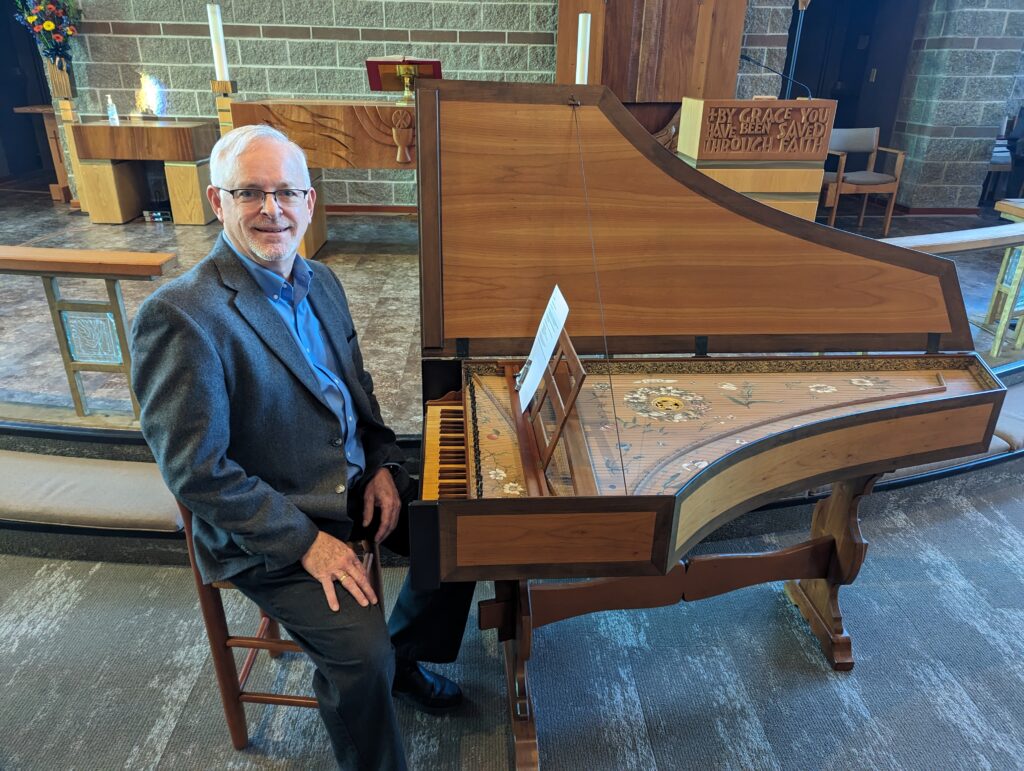
Then, using a slide show and audio recordings, Bruce took us on a tour of organs in Holland and Germany. At many of the locations, a host organist gave a tour of the organ and played for the group. At others, one of the group members improvised in order to demonstrate the sound of the organ.
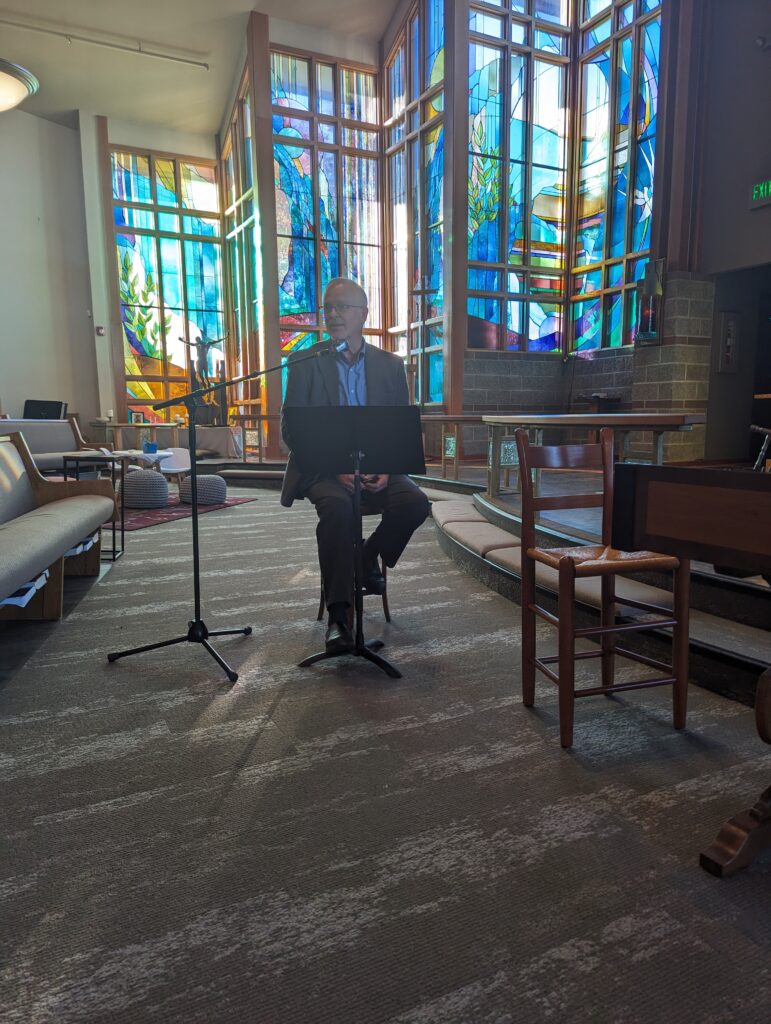
Bruce provided a handout for the group listing the organs discussed, and giving some history of construction and renovation over the years.
Bruce also provided recommendations of three recordings featuring organs that were on the tour for anyone interested in some follow-up listening.

